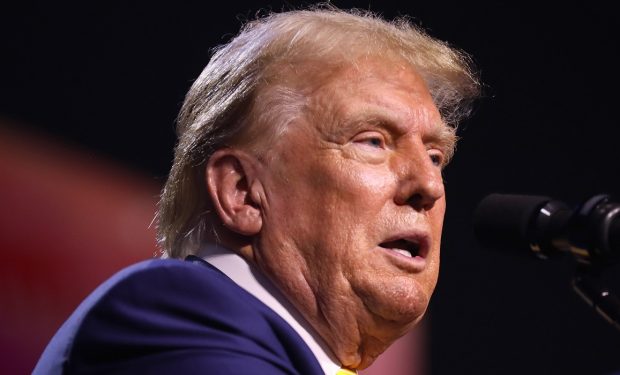GOP presidential nominee Donald Trump has a habit of referring to the grand dame of traditional news media (or mainstream or legacy media), The New York Times, as the “failing New York Times.”
It’s the same phrase he uses to describe the country he hopes to lead, frequently saying “we are a failing nation.”
But both entities — The New York Times and U.S. citizens — are helping Trump more than he deserves, according to critics. In the case of the Times and other so-called liberal media outlets, they say, Trump is extended the benefit of a pernicious both-sides-ism that consistently creates false equivalencies between Trump and his Democratic opponent, Kamala Harris.
Media critics have long criticized the Times for its Trump coverage, but two adjacent headlines this week serve to encapsulate the kind of coverage each candidate receives and, critics says, shows the media bending over backwards to make Trump’s latent racism palatable while questioning Harris’s veracity.
The journalistic malpractice is so stark that the headlines “should be studied in journalism classes for decades,” according to anti-Trump pundit and author Stuart Stevens, a Republican in exile during the MAGA insurgency.
Stevens writes, incredulous, that the “Trump headline could apply to an article about a Nobel prize winner in genetic studies.”
These two headlines should be studied in journalism classes for decades.
— Stuart Stevens (@stuartpstevens) October 10, 2024
Trump headline could apply to an article about a Nobel prize winner in genetic studies. pic.twitter.com/Ihbg6p78qt
This alleged false equivalence in coverage is occurring against the backdrop of a Trump-launched storm of disinformation about FEMA and the federal government’s response to Hurricane Helene.
These Trump hurricane lies are so patently untrue that four Republican governors in Southern states refuted them, meaning even a cadre of Trump loyalists publicly rejected the former President’s fabrications.
On active X user called ScaryLawyerGuy, an unrelenting critic of the differing levels of accountability demanded from the two candidates, wrote:
“The New York Times thinks Trump is better for its business model, the (literal) fortunes of multiple people on their politics desk depend on him winning and they will sane wash his Hitlerian views on eugenics if it helps him win.”
This is from the mobile app for the @nytimes and it's even worse. "Fascination' instead of "obsession". pic.twitter.com/3BA2Hohrdz
— ☮️ PMA Angel ☮️ (@peaceful_flower) October 10, 2024
Back in May, after Times editor Joe Kahn defended his paper’s coverage of what was then the Trump-Biden race, an article in The New Republic asked:
“When one of the candidates is running on an express vow to wreck the political and legal systems themselves, do typical conventions of political reporting—ones geared around presenting both sides as equivalently conventional political actors fighting on an even civic playing field—really get the job done in communicating what that means?”
Greg Sargent, TNR
TNR also credits the Times for producing “indispensable journalism about Donald Trump’s authoritarian designs for a second term” exposing “Trump’s schemes to unleash the Justice Department on political enemies, to gut the bureaucracy and stock it with loyalists, to functionally wreck our intelligence agencies.”
But the challenges continue because, as NPR wrote in September, “Ten years ago, the media were accustomed to politicians who could be shamed or at least embarrassed over errors of fact and even minor exposures of ignorance. Trump seemed then, and still seems now, quite impervious to either.”
The Times‘ top Trump reporter Maggie Haberman, recognizing the unique challenge that Trump’s lies create, still can’t agree with those critics who contend the liberal media actually wants Trump to win because he makes news.
Haberman says of the coverage: “What happens with this industry on the left that attacks the press is that it gets described as a grand conspiracy to try to help Trump somehow, as opposed to people doing their job on daily deadlines and not always hitting the mark because we are humans.”
There’s not hitting the mark, of course, and there is a failure to aim at the mark at all, which is the journalistic crime the headline diptych above purports to show the Times committing.
